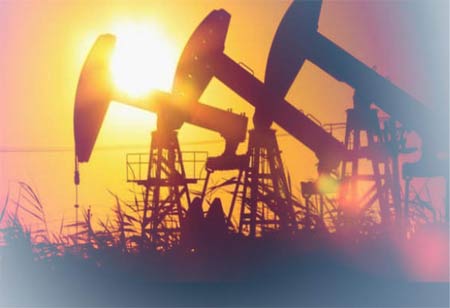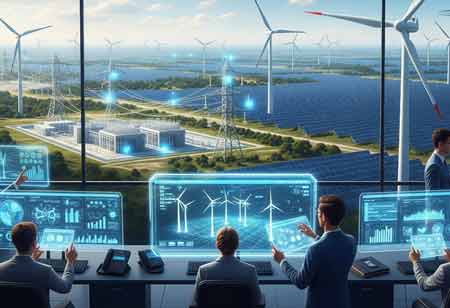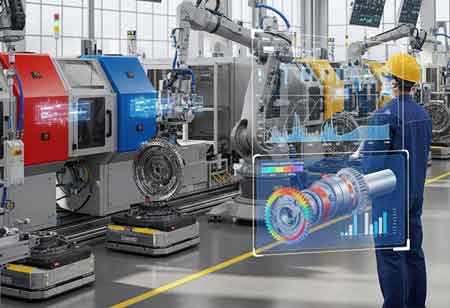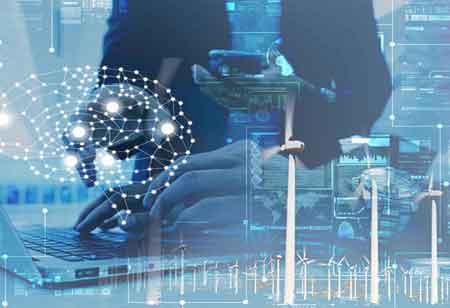CLOSE
Specials
I agree We use cookies on this website to enhance your user experience. By clicking any link on this page you are giving your consent for us to set cookies. More info
Be first to read the latest tech news, Industry Leader's Insights, and CIO interviews of medium and large enterprises exclusively from Energy Tech Review
Thank you for Subscribing
The Future of Energy: Emerging Technologies to Watch
The future of the energy and resources sector is poised for transformative change, driven by the need for sustainable practices, technological advancements, and growing global demands.

By
Energy Tech Review | Wednesday, September 10, 2025
Stay ahead of the industry with exclusive feature stories on the top companies, expert insights and the latest news delivered straight to your inbox. Subscribe today.
FREMONT, CA: The energy and resources sector is undergoing transformative change due to sustainable practices, technological advancements, and global demands. Renewable energy sources like solar, wind, and hydrogen are being prioritized, along with innovations in energy storage, smart grids, and efficiency. The sector is also undergoing significant shifts with the rise of circular economies, resource optimization, and digital technologies like AI and blockchain. This presents both challenges and opportunities for businesses and governments.
Safety Improvements Through AI and Machine Learning Integration
As the energy and resources sector advances, the safety of workers, the surrounding community, and the environment must remain a top priority. AI and machine learning technologies will play a crucial role in ensuring safety across operations. By streamlining access to critical asset documentation, AI-powered systems will enable workers to quickly retrieve necessary safety protocols and operational guidelines. This will ensure that trusted information is readily available, supporting safety standards and reducing the risk of accidents and unsafe conditions.
Increased Asset Uptime with Digital Twin Expansion
Digital twin technology will continue to grow, providing real-time digital representations of assets within the energy sector. These digital models will enhance operational visibility, offering actionable insights that improve efficiency and sustainability. As digital twins scale across operations, they integrate various technologies, including content management, AI and analytics, and cybersecurity measures. This interconnected approach will help create more autonomous, secure, and scalable digital representations of assets, ultimately optimizing performance and reducing downtime.
Advancements in Predictive Maintenance and Autonomous Supply Chains
Integrating predictive maintenance and autonomous supply chains will reshape operational efficiency in the energy and resources sector. By leveraging connected ecosystems and predictive models, companies will enhance their ability to foresee equipment failures before they occur. This proactive approach will reduce unplanned downtime, improve asset uptime, and minimize safety risks. The advancement of predictive maintenance and autonomous systems will allow for better coordination between asset owners and service providers, leading to more effective management of spare parts and field services.
Modernized Customer Experiences in Utilities
The energy sector will see significant changes in customer experience. Utilizing AI and advanced analytics, utilities will offer hyper-personalized services, providing customers with real-time data on energy usage and personalized recommendations for efficiency. Smart technologies will allow for more proactive communication with customers, offering insights into energy consumption patterns, cost-saving opportunities, and system outages. This transformation will be essential as utilities face competition from alternative energy providers and adjust to decentralized energy systems.
Reduced Cybersecurity Gaps in Energy Infrastructure
The increasing reliance on digital technologies in the energy sector brings a heightened risk of cyber threats. AI-driven cybersecurity systems will be deployed to monitor and neutralize threats in real-time to combat this. As smart grids and IoT devices become more integral to energy operations, companies will enhance their cybersecurity frameworks, focusing on governance, data ownership, and compliance with international regulations. These efforts will reduce security gaps and help protect critical infrastructure from evolving cyber risks.
As digital technologies continue to transform the sector, companies will face new challenges, particularly in cybersecurity, but will also unlock new opportunities for growth, innovation, and improved service delivery. By embracing these advancements, the energy and resources sector can drive a more sustainable, secure, and efficient future, ultimately meeting the growing global demand for cleaner energy solutions and optimized resource management.

Copyright © 2025 Energy Tech Review. All rights reserved






